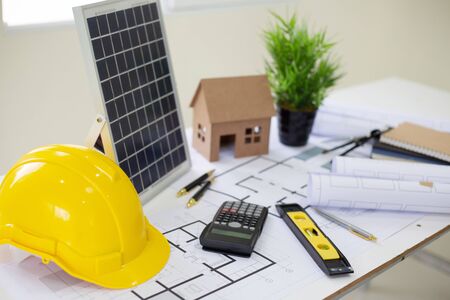Understanding Home Addition Basics
Thinking about adding more space to your home? A home addition is a great way to create extra room for your growing needs without the hassle of moving. Whether you want a bigger kitchen, an extra bedroom, or even a whole new level on your house, understanding the basics is the first step toward a successful project.
What Is a Home Addition?
A home addition involves expanding your existing house by building new structures that are permanently attached. These projects can vary in size and complexity, from small bump-outs to full second-story additions. They typically require permits, plans, and professional contractors to ensure everything meets local building codes.
Common Types of Home Additions
Here are some of the most popular types of home additions homeowners in the U.S. choose:
| Type of Addition | Description | Best For |
|---|---|---|
| Room Extension (Bump-Out) | Expands an existing room, like a kitchen or living room, by pushing out walls. | Adding space without changing the overall layout significantly. |
| Second-Story Addition | Adds an entirely new floor above the current structure. | Maximizing vertical space when lot size is limited. |
| Accessory Dwelling Unit (ADU) | A self-contained living unit built on the same property as the main home. | Rental income, guest accommodations, or multigenerational living. |
| Sunroom Addition | A glass-enclosed room often used for relaxation and enjoying natural light. | Creating a bright, airy space for lounging or plants. |
| Garage Conversion | Transforms existing garage space into livable square footage. | Affordable way to add bedrooms, offices, or studios. |
Why Consider a Home Addition?
Home additions offer many benefits. They can increase your property value, improve your quality of life, and give you exactly the kind of space you need. Instead of searching for a new home that fits your requirements, you can customize your current one to suit your lifestyle better.
Key Benefits:
- More Space: Perfect for growing families or changing needs.
- Increased Property Value: A well-planned addition can boost resale potential.
- Personalized Design: Tailor every detail to match your preferences.
- Saves Moving Costs: Avoid realtor fees and relocation stress.
Important Note:
No matter what type of addition you choose, it’s essential to check local zoning laws and obtain proper permits before starting construction. This ensures your project stays legal and safe throughout the process.
Now that you understand what a home addition is and the different types available, youre ready to dive deeper into planning specifics—like budgeting and choosing the right professionals—to bring your vision to life!
2. Setting Realistic Goals and Budget
Before you hire a contractor or start knocking down walls, it’s important to take a step back and define exactly what you want from your home addition. Clear goals and a well-planned budget will save you time, money, and stress throughout the project.
How to Define Your Needs and Priorities
Start by asking yourself what youre hoping to achieve with your home addition. Are you looking for more living space, an extra bedroom, a bigger kitchen, or maybe even a home office? It helps to list your must-haves versus your nice-to-haves. This way, if costs go up, you’ll know which features are essential and which ones can be adjusted or delayed.
Questions to Ask Yourself:
- What is the main purpose of the addition?
- Who will use this new space?
- Do I need more storage, functionality, or just extra square footage?
- How will this addition improve my daily life?
Determining the Scope of the Project
The scope refers to how big or small your addition will be. Will it involve structural changes like expanding your foundation or roofline? Or is it an interior remodel within existing walls? The scope directly impacts the timeline and cost of your project. Think about whether youll need permits, architectural plans, or specialized labor such as electricians or plumbers.
Common Types of Home Additions:
| Type of Addition | Description | Typical Cost Range (U.S.) |
|---|---|---|
| Room Addition | Adds a new room like a bedroom or living area | $20,000 – $100,000+ |
| Bump-Out | Small extension to an existing room | $5,000 – $30,000 |
| Second Story Addition | Adds another level to your home | $100,000 – $300,000+ |
| Garage Conversion | Turns garage into livable space | $15,000 – $60,000 |
Establishing a Realistic Budget Based on Regional Costs
Construction costs vary widely across the U.S., depending on location, labor rates, material availability, and local regulations. Its important to research average costs in your area before setting a final budget.
Estimated Average Construction Costs by Region (per square foot):
| Region | Average Cost per Sq Ft |
|---|---|
| Northeast (e.g., New York, Boston) | $200 – $400+ |
| Southeast (e.g., Atlanta, Miami) | $120 – $250 |
| Midwest (e.g., Chicago, Minneapolis) | $130 – $270 |
| Southwest (e.g., Dallas, Phoenix) | $110 – $240 |
| West Coast (e.g., Los Angeles, San Francisco) | $250 – $500+ |
Budget Tip:
A good rule of thumb is to add an extra 10%–20% buffer to your estimated costs for unexpected expenses. These might include permit delays, supply chain issues, or hidden problems like outdated wiring or plumbing that needs replacing.
By defining your goals clearly and aligning your budget with realistic regional costs, youll set yourself up for a smoother home addition process with fewer surprises along the way.

3. Navigating Zoning Laws and Permits
Before you start building your home addition, its essential to understand and follow local zoning laws and building codes. These rules vary across cities and counties in the U.S., so doing your homework early can save you time, money, and legal trouble.
Understanding Zoning Regulations
Zoning laws determine how land can be used in a specific area—whether its residential, commercial, or industrial. They also regulate what types of structures can be built, their size, height, placement on the lot, and even how close they can be to property lines (also known as setbacks).
Common Zoning Restrictions That May Affect Your Addition:
| Restriction Type | Description |
|---|---|
| Setbacks | Minimum distance required between your addition and property lines. |
| Height Limits | Maximum height allowed for buildings in your zone. |
| Lot Coverage | Percentage of your land that can be covered by buildings. |
| Use Restrictions | Certain areas may restrict additions like detached units or garages. |
Navigating Building Codes
Building codes are safety standards that construction must meet. These include structural requirements, electrical systems, plumbing, fire safety, energy efficiency, and more. In most places across the U.S., local jurisdictions adopt versions of the International Residential Code (IRC), sometimes with modifications.
Tips for Staying Compliant:
- Work with a licensed contractor familiar with your local codes.
- Double-check if your planned addition impacts existing electrical or plumbing systems.
- Make sure any structural changes comply with load-bearing regulations.
The Permitting Process Explained
A building permit is usually required before starting any major home addition. This ensures that your project meets all zoning and safety regulations. Heres what the general process looks like:
Steps to Get a Permit:
- Consult Your Local Building Department: Visit their website or office to learn about specific requirements for your area.
- Prepare Your Plans: You may need to submit blueprints or architectural drawings for approval.
- Submit Application: Include detailed project information such as scope of work, materials, estimated cost, and timeline.
- Pay Fees: Permit fees vary depending on the type and size of the project.
- Wait for Approval: Review times can range from a few days to several weeks depending on complexity.
Pro Tip:
If youre working with a contractor or architect, they often handle permits for you—just make sure its included in your agreement.
Avoiding Common Pitfalls
- Skipping Permits: Doing work without proper permits can lead to fines and having to undo completed work.
- Mistaking Zoning for HOA Rules: Homeowners associations have their own set of rules—always check both!
- Poor Documentation: Keep records of all permits, approvals, and inspections for future resale or refinancing purposes.
Navigating zoning laws and permits might seem overwhelming at first, but understanding these steps helps you avoid delays and ensures your home addition is safe and legally compliant from day one.
4. Assembling Your Project Team
Once you’ve got a clear vision and plan for your home addition, the next big step is putting together the right team to bring it to life. This usually includes hiring an architect or designer, a general contractor, and possibly several subcontractors. Choosing the right people can make or break your project—so take your time and do it right.
Choosing the Right Architect or Designer
An architect or designer helps you turn your ideas into detailed plans that meet building codes and match your lifestyle needs. While not every home addition requires an architect, more complex projects (like adding a second story) often do.
Tips for Hiring an Architect:
- Check credentials: Make sure they’re licensed in your state.
- Review past work: Ask to see a portfolio of similar projects.
- Understand their style: Make sure it aligns with your vision.
- Ask about process: Understand how they’ll handle permits, zoning laws, and collaboration with other professionals.
Selecting a General Contractor
The general contractor (GC) oversees the entire construction process. They manage timelines, hire subcontractors, order materials, and ensure everything is up to code.
Tips for Hiring a General Contractor:
- Get multiple quotes: Aim for at least three bids to compare prices and services.
- Check licenses and insurance: Make sure theyre properly certified and insured in your state.
- Read reviews and references: Talk to past clients about their experience.
- Ask about timeline and availability: A good GC should give you a realistic schedule and start date.
Understanding Subcontractors
Your general contractor may bring in specialized subcontractors—like electricians, plumbers, roofers, or HVAC technicians—to handle different parts of the job. While you typically won’t hire them directly, it’s still good to know who’s working on your home.
If You Hire Subcontractors Yourself:
- Vet each one carefully: Use the same process as hiring a GC—check licenses, insurance, and references.
- Create clear contracts: Define scope of work, payment terms, and deadlines in writing.
Comparing Quotes
A key part of assembling your team is comparing bids from different professionals. But don’t just go with the lowest price—look at what’s included, timelines, payment schedules, and overall professionalism.
| What to Compare | Why It Matters |
|---|---|
| Total Cost Estimate | Tells you if the bid fits within your budget |
| Scope of Work | Makes sure all tasks are clearly defined |
| Timeline & Completion Date | Avoids surprises during construction delays |
| Payment Schedule | You’ll know when payments are due so you can plan accordingly |
| Warranties & Guarantees | Adds peace of mind in case something goes wrong later |
The Importance of Checking References
No matter who youre hiring—architects, contractors, or subs—it’s crucial to check their references. Talking to previous clients can reveal red flags or confirm youre making the right choice.
Questions to Ask References:
- “Were they easy to communicate with?”
- “Did they stay on budget?”
- “Was the project completed on time?”
- “Would you hire them again?”
Selecting the right project team might feel overwhelming at first, but taking these steps ensures youre building with confidence. With a skilled and reliable crew behind you, your home addition will be off to a strong start!
5. Planning the Construction Timeline
Once your home addition is designed and permits are in place, its time to plan the construction timeline. Knowing what to expect during each phase of the build helps you stay organized and reduce stress. Here’s a breakdown of common project phases, how long they typically take, and tips for managing delays.
Typical Phases of a Home Addition Project
| Phase | Description | Estimated Duration |
|---|---|---|
| Site Preparation & Demolition | Clearing space, demolishing existing structures if needed, prepping foundation area. | 1–2 weeks |
| Foundation Work | Pouring concrete slab or building crawlspace/basement foundation. | 1–3 weeks |
| Framing | Erecting walls, floors, and roof structures. | 2–4 weeks |
| Rough-Ins (Plumbing, Electrical, HVAC) | Installing behind-the-wall systems before insulation and drywall. | 1–3 weeks |
| Insulation & Drywall | Packing walls with insulation and hanging drywall panels. | 1–2 weeks |
| Interior Finishes | Painting, trim work, flooring, cabinetry, and fixtures. | 3–6 weeks |
| Final Inspection & Cleanup | The city inspects the work for code compliance; contractors clean up the site. | 1 week |
Total Time Expectation
The entire process from start to finish usually takes about 3 to 6 months for most standard additions. However, larger or more complex builds can stretch up to 9 months or more. Weather conditions, permit delays, and availability of materials or labor can all affect the timeline.
Tips for Managing Delays and Staying on Track
- Create a detailed schedule: Work with your contractor to outline a realistic week-by-week plan.
- Add buffer time: Build in extra time between phases in case something runs over schedule.
- Stay flexible: Unexpected delays like rainstorms or backordered materials happen—be patient and adapt as needed.
- Maintain regular communication: Weekly check-ins with your contractor help identify issues early and keep things moving smoothly.
- Avoid making changes mid-project: Last-minute design tweaks can cause costly delays. Finalize plans before construction begins whenever possible.
Your Role During Construction
You don’t need to be at the job site daily, but staying informed is key. Ask your builder for progress updates regularly and keep track of milestones. If something feels off schedule, speak up early so small issues don’t become big setbacks.
6. Maximizing ROI and Resale Value
When planning a home addition in the U.S., it’s smart to think beyond just adding space. Making strategic design choices and using quality finishes can significantly increase your return on investment (ROI) and boost your home’s resale value. Here’s how you can make sure your project pays off in today’s competitive real estate market.
Focus on High-Impact Additions
Some additions offer better ROI than others. For example, adding a bedroom or bathroom tends to increase value more than expanding a living room. Below is a quick comparison of common home additions and their average ROI percentages in the U.S.
| Addition Type | Average ROI (%) |
|---|---|
| Midrange Bathroom Addition | ~54% |
| Primary Suite Addition (Upscale) | ~48% |
| Family Room Expansion | ~70% |
| Deck Addition (Wood) | ~65% |
| Kitchen Remodel (Minor) | ~81% |
Choose Timeless Over Trendy
Design trends come and go, but timeless styles have lasting appeal. Neutral colors, classic fixtures, and clean lines are more likely to attract buyers down the road. If you want to add a trendy touch, use elements that are easy to update like paint or light fixtures.
Quality Finishes Make a Big Difference
The materials you choose will impact not only how your addition looks but also how it’s valued. Buyers notice quality finishes—think hardwood floors, stone countertops, and solid cabinetry. These upgrades may cost more upfront but often pay off when selling.
Examples of Quality vs Budget Materials:
| Area | Budget Finish | High-End Finish |
|---|---|---|
| Flooring | Laminated Wood | Solid Hardwood or Engineered Wood |
| Counters | Laminated or Tile Surface | Quartz or Granite Stone |
| Cabinets | MDF with Veneer Overlay | Solid Wood Cabinets with Soft-Close Features |
| Lighting Fixtures | Basic Flush Mount Lights | Recessed Lighting with Dimmer Controls |
Match the Neighborhood Standard
Your home should align with others in your neighborhood in terms of size and features. Overbuilding can backfire if your home becomes too expensive for the area. Before starting your addition, research local comps (comparable properties) to understand what buyers expect in your market.
Add Functionality That Appeals to Buyers Today
The way people live is changing, and your addition should reflect that. Features like a dedicated home office, energy-efficient windows, or an in-law suite are increasingly attractive to modern buyers.
Trending Features That Add Value:
- Home office or study nook with built-in storage
- Main-floor laundry room for convenience and accessibility
- Sustainable building materials and energy-efficient appliances
A well-planned home addition doesn’t just create more space—it creates more value. By focusing on smart designs and quality finishes that match buyer expectations, you’re investing not only in your lifestyle but also in the future resale of your property.

